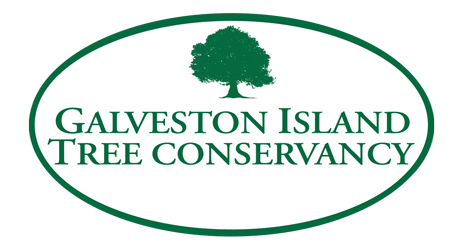Famous Galveston Tree
Tree Stories: Galveston’s Most Famous Tree
Can you name the most famous tree in Galveston? Here’s a hint: it survived the Great Storm of 1900 and the subsequent grade raising, plus all the hurricanes and droughts since that time. It is the only tree in town that has its own historical marker and is protected by the Galveston Historical Foundation. That survivor is the Borden Oak, which has outlived many famous trees that have succumbed to the perils of nature. It is featured in the book Famous Trees of Texas (A&M Press, 1970, and on the web at http://texasforestservice.tamu.edu/websites/FamousTreesOfTexas/Explore_Our_Trees/.
To visit this leafy BOI, look at the street side of 3503 Avenue K, and you’ll see this striking specimen of our beloved live oaks (Quercus virginiana). It’s not the state’s largest, but it certainly has a remarkable history. The Borden Oak is on private property and the homeowner is the steward of this wonderful tree.
This tree reportedly survives due to the foresight of Thomas Borden, brother of Galveston’s Gail Borden of condensed milk fame. His daughter, Mrs. S. M. Sias, recounted the story that the oak was on Borden’s property and that he protected it during the island’s grade raising following the 1900 Storm.
The grade raising itself killed most of the trees spared by that storm by smothering their roots. Tree roots need oxygen just as we do and being covered with too much soil--or standing water--causes suffocation. Generally it is recommended to add no more than two inches of soil per year above tree roots as the majority of a tree’s feeder roots are within the top 12 inches of the soil surface.
The Borden Oak’s salvation came about by creation of a dike around the tree, leaving an open space as the land around the dike was filled with salty dredge material. Fresh water was brought in to minimize salt injury to the tree. Over many years the well was gradually filled with soil as salt leached away and the roots were slowly covered, leaving the tree’s original base five feet below the soil surface.
The unusually extensive root system may allow it to access deep water sources, and provide anchoring to prevent uprooting during severe weather events.
Live oaks have long been a predominant tree species on the island. They provide valuable cover and nesting space for wildlife, in addition to providing food. Despite the highly visible losses of oaks on Broadway and in the East End following Ike's devastating flooding, they actually had the highest percentage of survival of all our tree species.
Those interested in famous and remarkable trees should attend the Galveston Island Tree Conservancy’s “Arbor Day” Brunch November 16 to hear author Ralph Yznaga tell stories from his book, Living Witness: Historic Trees of Texas. Tickets are available at www.galvestonislandtreeconservancy.org; call (409) 599-6357 for more information.
Galveston should have a list of our own remarkable trees, so let’s create one. Send your nomination to treesforgalveston@gmail.com and we’ll feature the top five in a future article!
Hurricane Ike caused the loss of 40,000 trees on Galveston Island. The Galveston Island Tree Conservancy was formed to address that loss and e has replaced over 14,000 through grant-funded plantings and giveaways, with more planned. “Tree Stories” is an ongoing series of articles intended to bring attention to outstanding Island trees, tree care, and tree issues. If you have or know of a special tree on Galveston Island that should be highlighted, please email treesforgalveston@gmail.com. Margaret Canavan is a Galveston resident, a Galveston County Master Gardener, and a member of the Conservancy Board.

